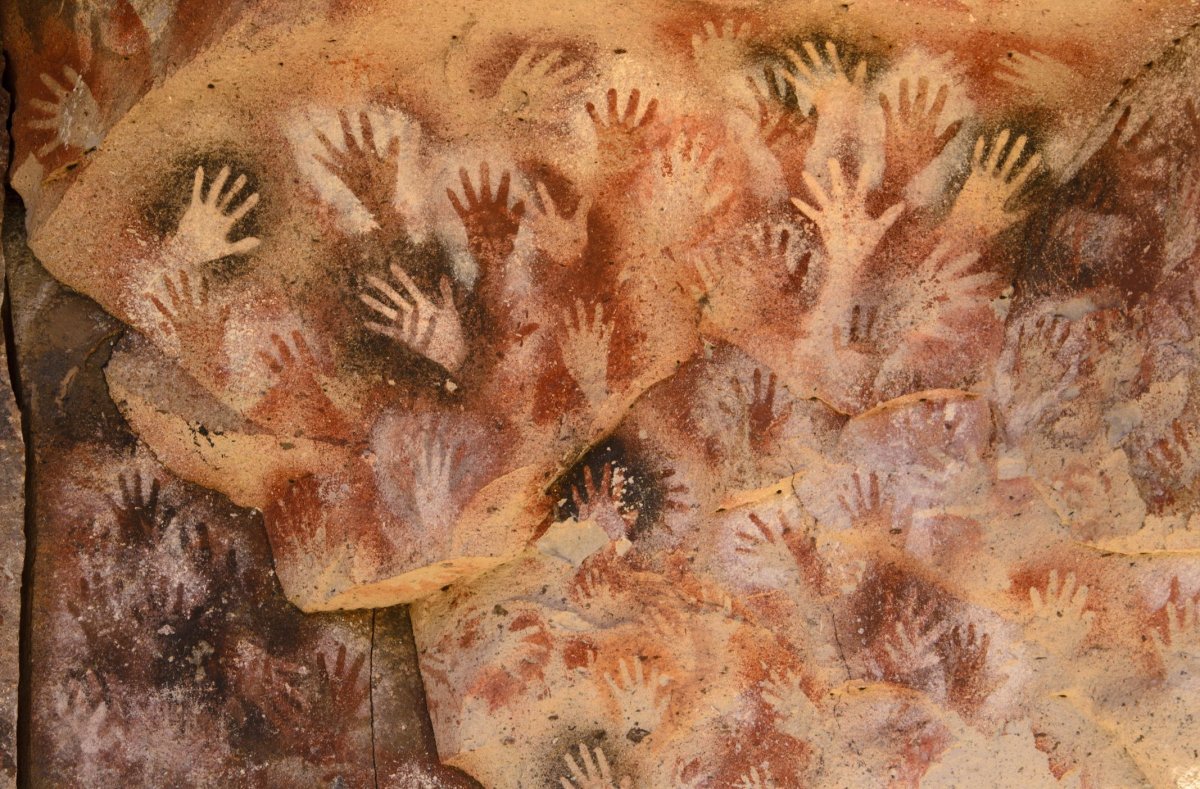Stone Age people might have cut off their own fingers during religious rituals where they took mind-altering substances. This theory relates to the unusually high number of cave paintings depicting hands with fingers missing and—while scientists studying the rock art say they could be wrong—it would help explain this strange phenomenon.
Hands with missing digits have been recognized as an "enigmatic feature of the rock art" for some time—but few studies have explored the reasons behind it. In a study, published in the Journal of Paleolithic Archaeology, Mark Collard, an archaeology professor at Canada's Simon Fraser University, and colleagues examined hundreds of these images, all made by Upper Paleolithic people living in Western Europe tens of thousands of years ago.
At one specific site in France, there are 231 hand images. Of these, 114 clearly have at least one finger segment missing. The hands appear to belong to a cross-section of society—including women, men and children.
Scientists have previously proposed a number of different reasons for the missing fingers. Some say they could reflect the use of sign language or a counting system, while others suggest it could show a high proportion of frostbite cases. Another idea is that they just liked drawing their hands in different positions i.e. with their fingers bent in certain ways, making it appear they had lost part or all of them.
Collard and his team have put forward another idea—that they were purposefully amputated as part of a cultural or religious ritual.
They looked at reports of finger amputation practices among 121 different societies across the world and analyzed the reasons for doing it. They ruled out rituals where fingers are amputated after death as that would have meant carrying a dead body into a cave, which "would have been difficult." They also rule out other rituals, including punishment, veneration and marriage—all of these reasons would not fit well with the data recorded. For example, among modern societies finger amputation for marriage is restricted to women.
Instead, they say a more likely scenario—if they were purposefully cutting their own fingers off—is that they were doing it as part of religious ceremonies, probably relating to mourning or sacrifice. Both of these fit with the cross-cultural sample and would not need to be age- or sex-dependent.

"Sacrifice fits well with one of the major hypotheses concerning the nature of Upper Paleolithic rock art—namely, that they are remnants of religious rituals," the team wrote. "A number of scholars have posited that the caves with UP rock art represent sanctuaries, shrines, or even churches. The religion of the people who produced the art has been argued to have been animistic and to have involved shamans. Sacrifice is ritualistic in nature and carried out to appeal to a supernatural power for assistance."
The team argues that if sacrifice was the reason for finger amputation, then this could relate to "dysphoric rituals"—ones that "arouse intensive negative emotions through practices like collective possession, homicide, cannibalism, and the use of mind-altering substances." These rituals have previously been found to create strong bonds among participants and can lead to a phenomenon called "identity fusion," where members identify with one another as if they are kin.
Collard told New Scientist that the team is not convinced by the idea Stone Age people were cutting off their own fingers, but said it would help explain what is found at these ancient sites.
"Finger amputation was a reasonably common behavior in many regions in the recent past," he told the magazine. "The available data seem to fit reasonably well with the hypothesis that some Upper Palaeolithic people engaged in finger amputation for the purposes of religious sacrifice. The idea that the hand images reflect sacrifice is consistent with the way that cave art has been interpreted by many researchers over the years.
"It's not a slam-dunk case, by any means. We could easily be wrong."
Other scientists are not convinced by the argument. Ian Gilligan, from the University of Sydney, Australia, and Paul Pettitt, of the U.K.'s Durham University, both told the magazine they think other explanations are more plausible. "Most of the ethnographic examples involve the removal of a little finger," Pettitt said, pointing out some hand stencils appear to have as many as four fingers missing.
"Nobody would be idiotic enough to remove every finger bar the thumb. That simply makes no sense."
Uncommon Knowledge
Newsweek is committed to challenging conventional wisdom and finding connections in the search for common ground.
Newsweek is committed to challenging conventional wisdom and finding connections in the search for common ground.
About the writer
Hannah Osborne is Nesweek's Science Editor, based in London, UK. Hannah joined Newsweek in 2017 from IBTimes UK. She is ... Read more
To read how Newsweek uses AI as a newsroom tool, Click here.








